
- Email support@dumps4free.com

Topic 5: Misc. Questions
You have SQL Server on an Azure virtual machine that contains a database named DB1.
The database reports a CHECKSUM error.
You need to recover the database.
How should you complete the statements? To answer, select the appropriate options in the
answer area.
NOTE: Each correct selection is worth one point.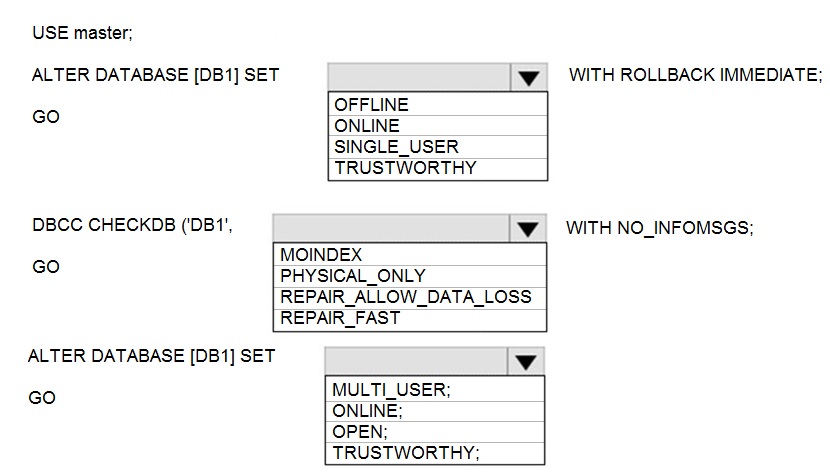
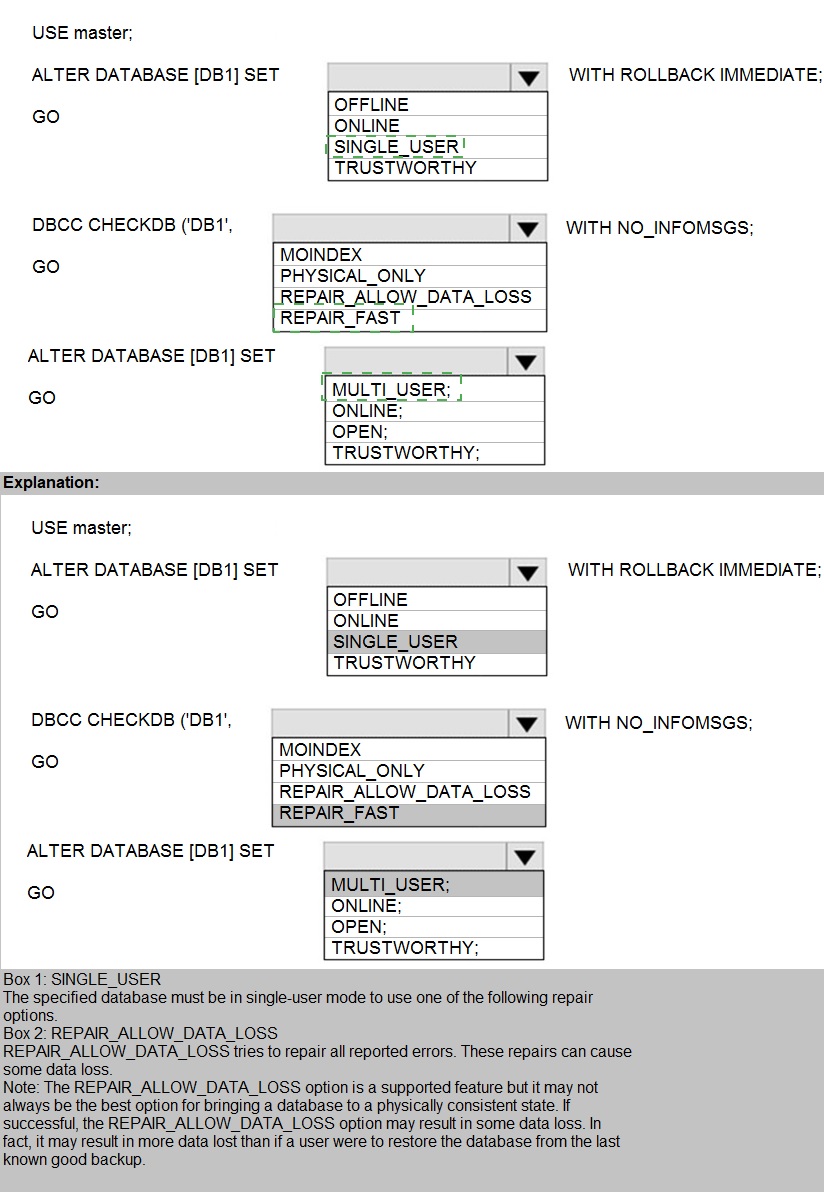
You have SQL Server on an Azure virtual machine.
You review the query plan shown in the following exhibit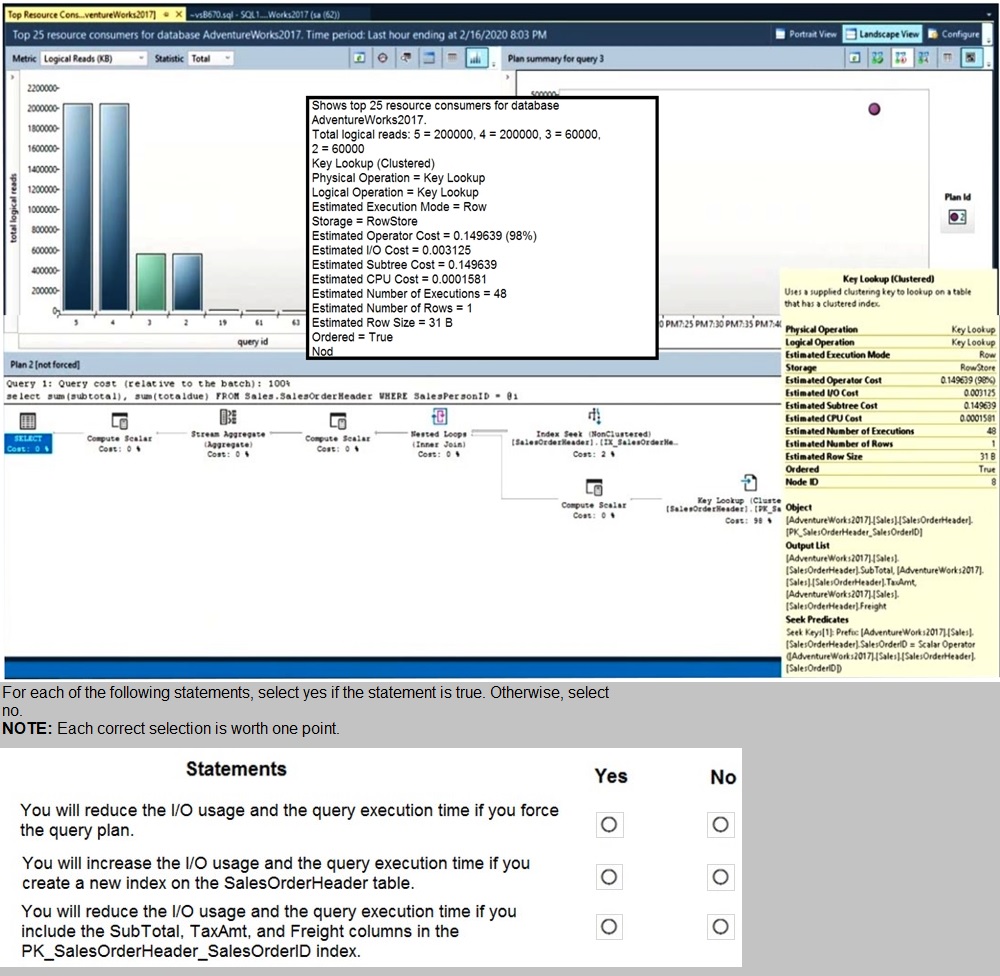

You have a Microsoft SQL Server 2019 instance in an on-premises datacenter. The
instance contains a 4-TB database named DB1.
You plan to migrate DB1 to an Azure SQL Database managed instance.
What should you use to minimize downtime and data loss during the migration?
D18912E1457D5D1DDCBD40AB3BF70D5D
A.
distributed availability groups
B.
database mirroring
C.
log shipping
D.
Database Migration Assistant
Database Migration Assistant
Explanation:
The Data Migration Assistant (DMA) helps you upgrade to a modern data platform
detecting compatibility issues that can impact database functionality in your new version of
SQL Server or Azure SQL Database. DMA recommends performance and reliability
improvements for your target environment and allows you to move your schema, data, and
uncontained objects from your source server to your target server.
Note: SQL Managed Instance supports the following database migration options (currently
these are the only supported migration methods):
Azure Database Migration Service - migration with near-zero downtime.
Native RESTORE DATABASE FROM URL - uses native backups from SQL
Server and requires some downtime.
Reference:
https://docs.microsoft.com/en-us/sql/dma/dma-overview
You have SQL Server on an Azure virtual machine named SQL1.
SQL1 has an agent job to back up all databases.
You add a user named dbadmin1 as a SQL Server Agent operator.
You need to ensure that dbadmin1 receives an email alert if a job fails.
Which three actions should you perform in sequence? To answer, move the appropriate
actions from the list of actions to the answer area and arrange them in the correct order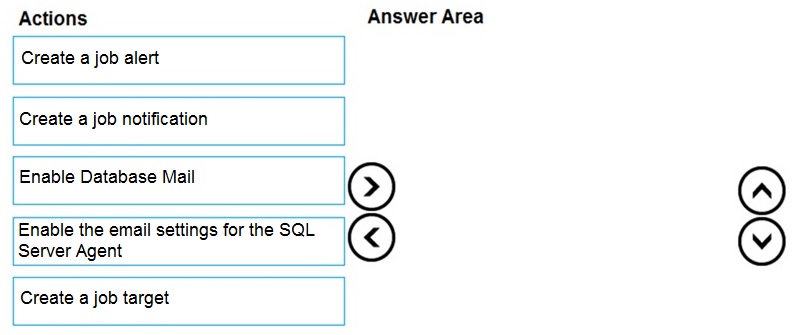
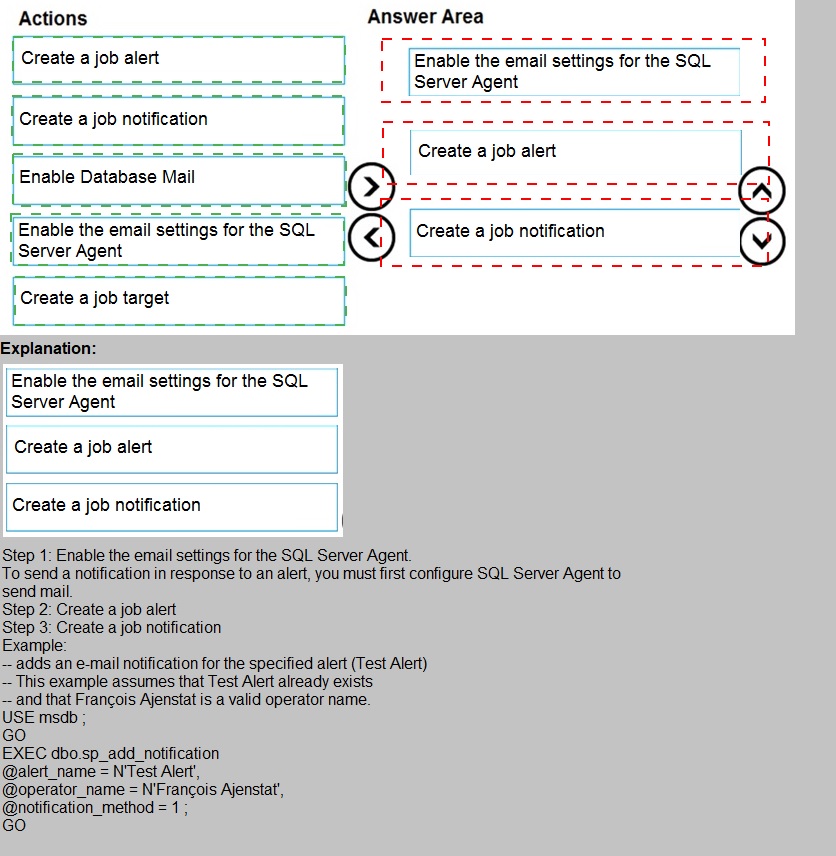
Note: This question is part of a series of questions that present the same scenario.
Each question in the series contains a unique solution that might meet the stated
goals. Some question sets might have more than one correct solution, while others
might not have a correct solution.
After you answer a question in this section, you will NOT be able to return to it. As a
result, these questions will not appear in the review screen.
You have an Azure SQL database named Sales.
You need to implement disaster recovery for Sales to meet the following requirements:
During normal operations, provide at least two readable copies of Sales.
Ensure that Sales remains available if a datacenter fails.
Solution: You deploy an Azure SQL database that uses the General Purpose service tier
and geo-replication.
Does this meet the goal?
A.
Yes
B.
No
No
Explanation:
Instead deploy an Azure SQL database that uses the Business Critical service tier and
Availability Zones.
Note: Premium and Business Critical service tiers leverage the Premium availability model,
which integrates compute resources (sqlservr.exe process) and storage (locally attached
SSD) on a single node. High availability is achieved by replicating both compute and
storage to additional nodes creating a three to four-node cluster.
By default, the cluster of nodes for the premium availability model is created in the same
datacenter. With the introduction of Azure Availability Zones, SQL Database can place
different replicas of the Business Critical database to different availability zones in the
same region. To eliminate a single point of failure, the control ring is also duplicated across
multiple zones as three gateway rings (GW).
Reference:
https://docs.microsoft.com/en-us/azure/azure-sql/database/high-availability-sla
| Page 5 out of 44 Pages |
| Previous |